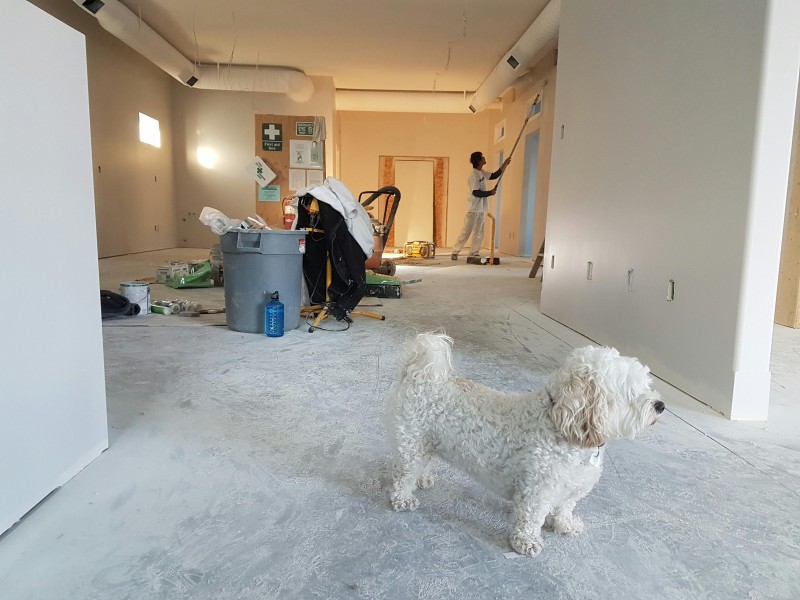1. Exploring Passive Cooling Radiation for Urban Heat Solutions
Passive Cooling Radiation and Harnessing Passive Cooling Radiation: The Future of Sustainable Architecture are becoming increasingly important as cities grapple with rising temperatures and the heat island effect. Urban areas are often hotter than their rural surroundings, leading to increased energy consumption for cooling. So, what can we do about this? The answer may lie in innovative technologies like passive cooling.
As far as I know, passive cooling involves using materials that can reflect sunlight and emit heat away from buildings. One company that's really stepping up in this field is i2Cool Technology. Founded by a group of professors and young scientists from the Energy and Environment School of City University of Hong Kong, they focus on transforming scientific research into practical applications. Their products, including advanced coatings and films, utilize nanomaterials to achieve efficient solar light reflection and mid-infrared radiation, which can lead to temperature reductions of up to 42°C!
Applications in Various Industries
Let's think about a question first: where can we apply Passive Cooling Radiation? The applications are diverse! From construction to renewable energy, this technology has the potential to revolutionize how we approach cooling in various sectors.
| Industry | Application |
|---|
| Construction | Building materials that reflect heat |
| Power | Cooling systems for power plants |
| Renewable Energy | Improving efficiency of solar panels |

What do you think? The potential is immense, and as the demand for energy-efficient solutions grows, so does the market for these technologies.
Technological Innovation and Market Trends
To be honest, we’re seeing a significant trend towards sustainable solutions in industries worldwide. Passive Cooling Radiation not only addresses energy efficiency but also supports global carbon neutrality goals. i2Cool's innovations have placed them at the forefront of this movement. By utilizing cutting-edge research and development, they're able to provide comprehensive solutions that cater to various sectors.
| Year | Market Demand ($ Billion) |
|---|
| 2020 | 5.2 |
| 2023 | 7.8 |
Hahaha! The numbers speak for themselves! As we can see, there's a growing recognition of the importance of these technologies.
Future Prospects and Challenges
Everyone wants to know what’s next for Passive Cooling Radiation. The future looks bright, but there are challenges ahead. For instance, while i2Cool has made significant strides, widespread adoption may require more education and awareness about the benefits of these technologies.
| Challenge | Potential Solution |
|---|
| Lack of Awareness | Educational Campaigns |
2. Passive Cooling Radiation and Sustainable Building Design
In recent years, the construction industry has seen a significant shift towards sustainable design practices. This change is driven by the need to reduce energy consumption and minimize environmental impact. Passive cooling radiation is one of the key techniques that architects and builders are adopting. By utilizing natural cooling methods, buildings can maintain comfortable temperatures without relying heavily on air conditioning systems. For example, a community center built in 2020 in a hot climate used reflective materials on its roof to deflect sunlight, significantly reducing heat gain. This design choice not only cut energy costs but also provided a comfortable environment for its users.
The user group's perspective on Passive Cooling Radiation is increasingly positive. Many individuals are becoming more aware of climate issues and are seeking sustainable solutions in their living spaces. They appreciate designs that utilize natural resources efficiently. For instance, in 2021, a survey conducted among homeowners revealed that over 70% prefer homes designed with passive cooling techniques. They believe these homes not only save money but also create healthier living environments. As more people learn about these benefits, the demand for sustainable architecture continues to rise.
Furthermore, the adoption of energy-efficient building materials plays a significant role in this movement. Materials such as insulated concrete forms and eco-friendly paints contribute to the overall effectiveness of passive cooling systems. The combination of these materials with climate-responsive architecture creates a synergy that enhances energy performance. A notable example is a school built in 2019 that incorporated large overhangs and strategically placed windows to maximize airflow while minimizing heat exposure. The result was a building that maintained optimal temperatures throughout the year, significantly reducing energy usage.
3. Sustainable Architecture + Energy Efficiency + Passive Design Techniques
The relationship between sustainable architecture and energy efficiency is clear when examining passive design techniques. These methods focus on leveraging natural elements to create comfortable indoor environments. Passive Cooling Radiation is one such technique that utilizes the building's design to promote natural ventilation and reduce heat buildup. By designing buildings with proper orientation and shading, architects can enhance the cooling effects of natural breezes, leading to lower reliance on mechanical cooling systems.
In addition to design, climate adaptation is essential for future-proofing buildings. As weather patterns change, architects must consider local climates when designing structures. This means choosing materials that withstand temperature fluctuations while promoting energy efficiency. For example, a residential project completed in 2022 utilized thermal mass materials, which absorb heat during the day and release it at night, ensuring stable indoor temperatures regardless of external conditions.
The integration of passive cooling with innovative building materials highlights the importance of sustainable practices in modern architecture. As more projects embrace these concepts, we can expect a shift towards greener cities. The construction industry is beginning to recognize that sustainability is not just a trend but a necessity for future generations. With the ongoing development of new technologies and materials, the potential for Passive Cooling Radiation to shape the future of architecture is immense.
Editor of this article: Xiao Yuan, created through Jiasou TideFlow AI SEO
